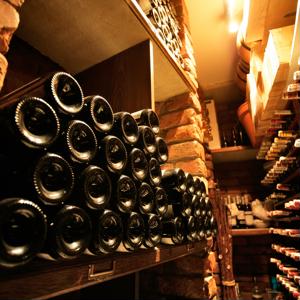Wine labels don’t have to all look the same. There are ingrained patterns, tropes and norms within this ancient industry, but modern winemakers may get more mileage out of subverting convention than hewing closely to it. After all, the struggle to get a new wine variety noticed will only become more challenging as shelves become increasingly crowded. Becoming an outlier may draw eyes, no matter how many competitors a brand is jockeying for space with.
There’s a parallel to be drawn with the craft beer market. Over the past few decades, brewers have created a universe of bold and memorable can and bottle designs. Vineyards that embrace a similarly iconoclastic pose may set themselves up for success.
More than one kind of boldness
Rather than directly emulating another brand, designers and winemakers will have to find outstanding visual elements that suit their own offerings’ personalities and unique appeal. A recent Eater feature highlighted some companies taking different approaches to creating eye-catching and appealing wine labels.
For example, Mouton Noir uses stark black-and-white art and text to draw a sharp contrast with overly baroque or fancy classic wine labels. Andre Mack, owner of the company, aims his wine varieties at consumers who value fun and personality in the wines they buy. If a label is too complicated, it will lose some of this bold, immediate appeal.
Eater also profiled Barrel + Ink, which goes for lushness and ornate design elements as opposed to Mouton Noir’s in-your-face simplicity. The brands have differing approaches to capturing the same market: Wine buyers who shun the fanciness of the centuries-old traditional brands.
Forward-thinkers meet traditionalists
Studying the finalists in wine labeling contests is a great way to see modern designs and classic thinking side by side. The breadth of styles debuting today shows the many ways in which brands can express their personalities. Winemakers can start thinking of what visual treatments their own next offerings should receive.
Wine Magazine’s recent ranking of new South African offerings shows off a few exciting designs that stand out. Rascallion Wines, for example, delivered a pair of designs where the wine labels emulated vinyl records, one called “45 RPM” and the other “33 1/3 RPM.” The same vineyard created a whole series of varieties that use text art exclusively on their labels, foregoing other imagery altogether. Taking another approach, Delaire Graff opted for a textured, metallic style that promises elegance without looking old-fashioned.
When it’s time to upgrade your brand’s wine labeling capabilities, check out Optimedia Labs’ label printer online store in the U.S. or in Canada.
